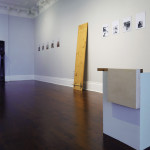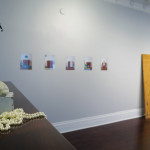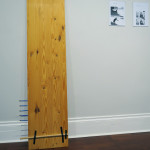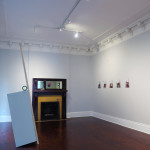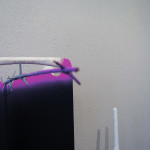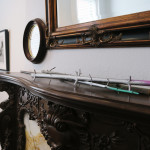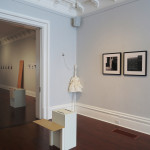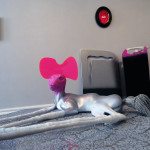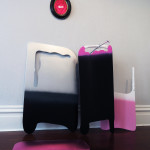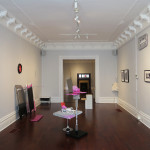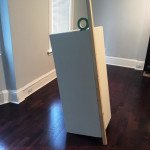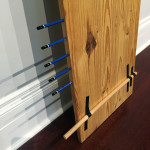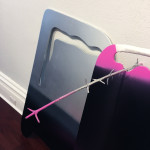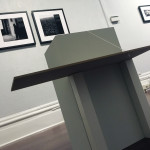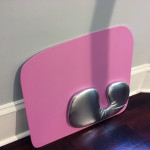Jiří Kovanda / Lumír Hladík – Polar Transference
21.09 – 11.12.2017 Gallery1718 Ottawa Canada
How do critical discourse and grand narratives become transferred over global distances to be understood between people? The cultural“Zeitgeist”, a propped up promise of fully encompassing universal modes of thought, usually fares as an enticing ideal that never fully matures. Yet even though thousands of kilometers separated them, artists Jiří Kovanda and Lumír Hladík, both absorbed these universal signals and conjoined via invisible forces of artistic determinism. Dedicated to critical commentary on the human condition, they have been connected yet apart for the better part of 40 years.
Living behind the former Czechoslovakian iron curtain, the artists first came together through subversive and philosophical artinterventions that pushed back against state-mandated art. For these two artists, in their early days, to resist meant to survive. A few years later, Hladík travelled westwards to North America while Kovanda has continued his art practice in Europe, both nurturing unique approaches to parallel leitmotifs.Now, as established contemporary art forces, their polar-opposite practices only serve to highlight thematic transference that have kept them connected for so long.
Both Kovanda and Hladík urge the viewer to absorb art on an unprecedented level. At first, the exhibition’s practices can appear disparate; Kovanda’s ultra-subtle installation interventions matched with Hladík’s overt objects make for two seemingly disconnected extremes. Yet the foregrounding years of counter-culture dissonance involved within their histories signals the unifying roots from which they stem: curiosity, apprehension and doubt. Both artists keep attacking the world’s obviousness by scrutinizingits axioms, eroding its arbitrarity and redefining what all humanity takes for granted.
Jiří Kovanda
As a self-taught action-artist from the Czech Republic, Jiří Kovanda has always acted in deliberate and conscious ways. Every public installation that he staged disrupted daily rituals, albeit in slight or poetic ways, blurs the lines between art and the everyday. His work at Gallery 17/18 is a culmination of surveying, collecting, archiving and preserving. Taking commonly accessible materials and using them as ready-mades not only invokes notions of object-oriented ontology, but also how the physical gallery space affects object-perception. Through his adept site-specific installations in outdoor environments, Kovanda almost invisibly critiques the ability for art to operate outside of its contemporary home. Gallery 17/18 is alternative in that it exists as a gallery-cum-Victorian house, utilizing romantic architectural motifs as unique environmental components for artists and curators to incorporate in their installation.
Lumír Hladík
As subtle and hidden Kovanda’s artistic gestures are, Hladík’s hard-hitting and often confronting aesthetics don’t apologize in creating discomforting scenes of entropy and sexual innuendo. With both artists coming from a formerly oppressive Czechoslovakian culture towards contemporary art, Hladík decided to investigate natural environments in Canada. Postulating about man’s relationship of nature, Hladík investigated society’s domination over organic settings. Drawing from Canadian wildlife, he juxtaposed artificially vibrant colours with baroque imagery, conflating high and low culture. Similar to Kovanda, who took from his surroundings, so too did Hladík (albeit more Canadiana-focused). As his practice progressed, he has continued to produce assaulting and contextually rich materials that critique the very fabric of societal standards.
Taken together, these artists seem antithetical; one whose subtelty often goes unnoticed, another whose work demands attention. But the true connection lies within their unrelenting questioning of the day-to-day. They construe disruptions that realize into clever and often challenging frictions to alert viewers to potential conundrums and philosophical issues. As both had started as Czech Action artists,they’ve also both become contemporary art figures around the world. Yet even as their practices seemingly drifted apart, they never lost that enthusiasm for pursuit of greater truths.
For the first time inCanada, both artists have been curated together to nuance Czech and Canadian history, culture, meta-thought and the persistent world malaise. The PolarTransference exhibit marks an historic convergence of past and present that showcases the importance of critical thought.
Mathew Kyba, Toronto, September 16, 2017

